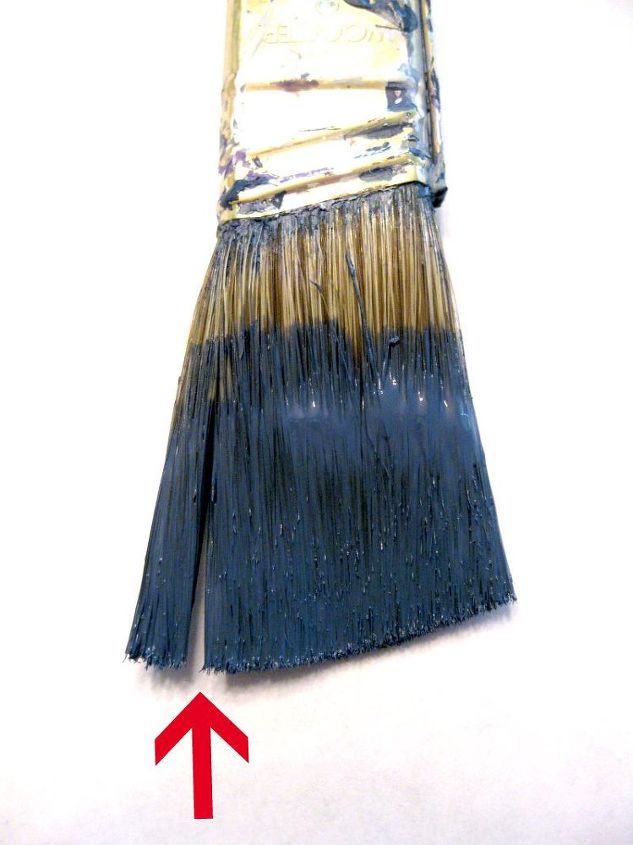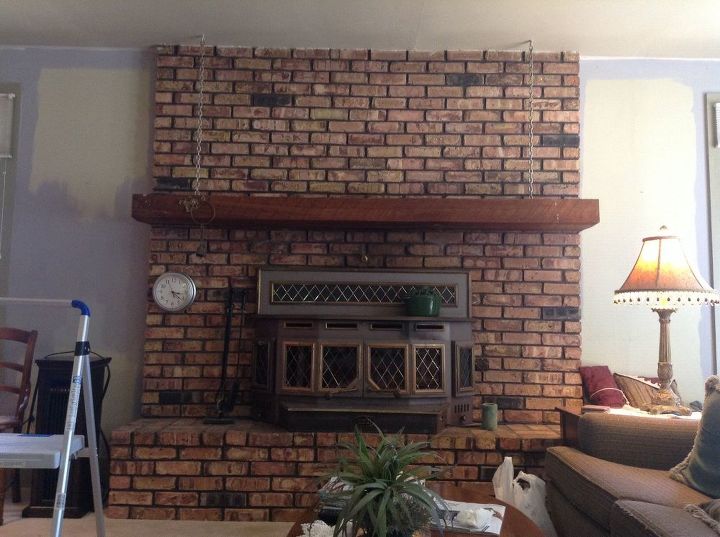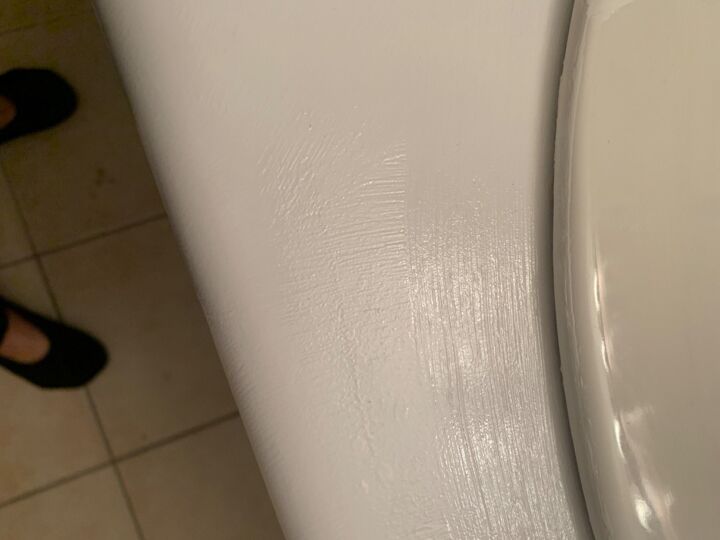Paint brush problem

Does anyone know what causes this and, more importantly, how do I prevent it?
-
After you wash them to you squeeze out the excess water and reshape them? We press our ends to a point. Here's a picture I decided to draw up for you as my mind is not functioning well enough to find the words.
 Z
on Oct 13, 2015
Z
on Oct 13, 2015
 Helpful Reply
Helpful Reply- See 6 previous
-
-
you might like to try this: after cleaning your brushes thoroughly leave them to dry. Once dry, bring a pan of water to a gently rolling boil and dip your brush into the water for about 20-30 seconds. Remove and gently shape. Leave to dry by either laying them flat on a cloth, or overlapping the edge of the sink. I haven't done this with very large brushes, but it works every time with artists brushes, so I think there should be no problem. Don't put any other part of the brush in the water except the bristles. Good luck!
 Francesca
on Oct 13, 2015
Helpful Reply
Francesca
on Oct 13, 2015
Helpful Reply -
-
I would call the manufacturer and see what they say. It seems you have done everything all of us do.Just a thought.
 Janet Pizaro
on Oct 13, 2015
Helpful Reply
Janet Pizaro
on Oct 13, 2015
Helpful Reply- See 1 previous
-
-
Having worked for Home Depot for many years if customers had a issue of certain items thats what I did many times regardless of the product.
 Janet Pizaro
on Oct 13, 2015
Helpful Reply
Janet Pizaro
on Oct 13, 2015
Helpful Reply -
-
The brush appears to have dried paint up in the ferrule (metal part). This is the result of improper cleaning. Once there, it is difficult to remove. For latex paints I wash my brushes and comb them with a painter's comb and brush them with a wire bristle brush (especially from the ferrule downward). In this washing I bend the bristles back and forth several times. I spread out the bristles and let flowing water go deep into the ferrule. Then I spray Mean Green on them and work it into the bristles, turn the brush upside down to drain Mean Green into the ferrule. I let the brush sit a little while, and then I clean it again, using the painter's comb and wire brush. I use Palmolive traditional dish soap for the cleaning, and as a last step I squirt Palmolive dish soap onto the bristles, massage it into them, shape the brush (as described above) and let the soap dry. Then, the next time I go to use the brush, I wash out the Palmolive dish soap and the brush almost always retains it shape. For solvent based paints I clean the brushes with whatever the manufacturer recommends, then do the same cleaning process as I described for the latex paint brushes. Now, it must be said that the way you use the brush causes clumping of the bristles. As designed, the brushes are to be swept across the surface to be painted, keeping the bristles flat against the surface, not sideways as you do when you are cutting in. From the appearance of the above brush I can see that I cut in as you do, turning the brush sideways and using the chisel edge to get a fine line. It is this process that bends the bristles to form the clumps. Because the bristles are essentially plastic, they tend to "remember" the shape and return to it. In the old days, when we had bushes made of different animal hairs. those hairs tended to retain their original shapes and not the "remembered" shapes.But they tended to be "floppy" and not retain their "stiffness" and "spring" (like in springing back into position). A good brush such as those would today cost between $150.00 and $400.00. So, for the standard Wooster and Purdy brushes (I have 38 brushes) you have to retrain yourself to cut in using the flat side approach (difficult to learn and difficult to unlearn the edge method). To prevent as much as possible the deformation of the bristles, you want to train yourself to apply the brush flat side to the surface, and then moving left or right, make the bristles deflect to form a slight curve that points away from the direction you are stroking. Too, more money, a more expensive brush can give you better results. I have been using a $35.00 "oval" 4" brush, or "3" brush for ten years. Keeping it clean has made it last. This includes dipping the brush into the paint only 2/3 of the way, and when paint creeps up to the ferrule, stopping and cleaning the brush. I may do this several times a day, using only Palmolive soap and water. I have irritated several of my coworkers by insisting they stop and clean their brushes while they were "in the flow" and didn't want to stop. But, if you pay $35.00 for a paint brush, you want it to last. -Meticularius
 Meticularius
on Oct 14, 2015
Helpful Reply
Meticularius
on Oct 14, 2015
Helpful Reply- See 2 previous
-
-
Clean your brushes with fabric softener. An old painters trick.
 Kristen Zebley-Bossert
on Oct 14, 2015
Helpful Reply
Kristen Zebley-Bossert
on Oct 14, 2015
Helpful Reply- See 1 previous
-
-
if u are using an ol-based paint u need to clean either with turp or thinner
 Louis Lieberman
on Oct 14, 2015
Helpful Reply
Louis Lieberman
on Oct 14, 2015
Helpful Reply- See 1 previous
-
-
Try this and never clean the brush at all ;) http://www.mypaintsaint.com/
 2612805
on Oct 14, 2015
Helpful Reply
2612805
on Oct 14, 2015
Helpful Reply- See 1 previous
-
-
very useful, thanks
 Wendy Johnson
on Oct 14, 2015
Helpful Reply
Wendy Johnson
on Oct 14, 2015
Helpful Reply -
Related Discussions
Should I paint or stain my oak kitchen cabinets?
I was wondering if you could help me with something -- I have an entirely oak kitchen. I know it's the rage now to paint or gel stain cabinets. I've been considering ... See more
How to paint a metal front door?
How do I paint my front door? It's metal.
How to paint grout?
How do I paint grout to change the color? The grout is in great shape, but the color - meh.
How to whitewash a brick fireplace?
What is the best method to whitewash bricks surrounding a fireplace?
Chalk paint vs spray or brushed-on paint
I am not clear on using chalk paint instead of spray paint or regular paints on projects. Is it a finished look or the process that determines which to use?
Repair paint brush marks in appliance epoxy spray paint ?
Noticed these paint marks from primer after epoxy dried. Can I just spray a couple more coats of appliance epoxy over it? Do I sand first? TIA!




